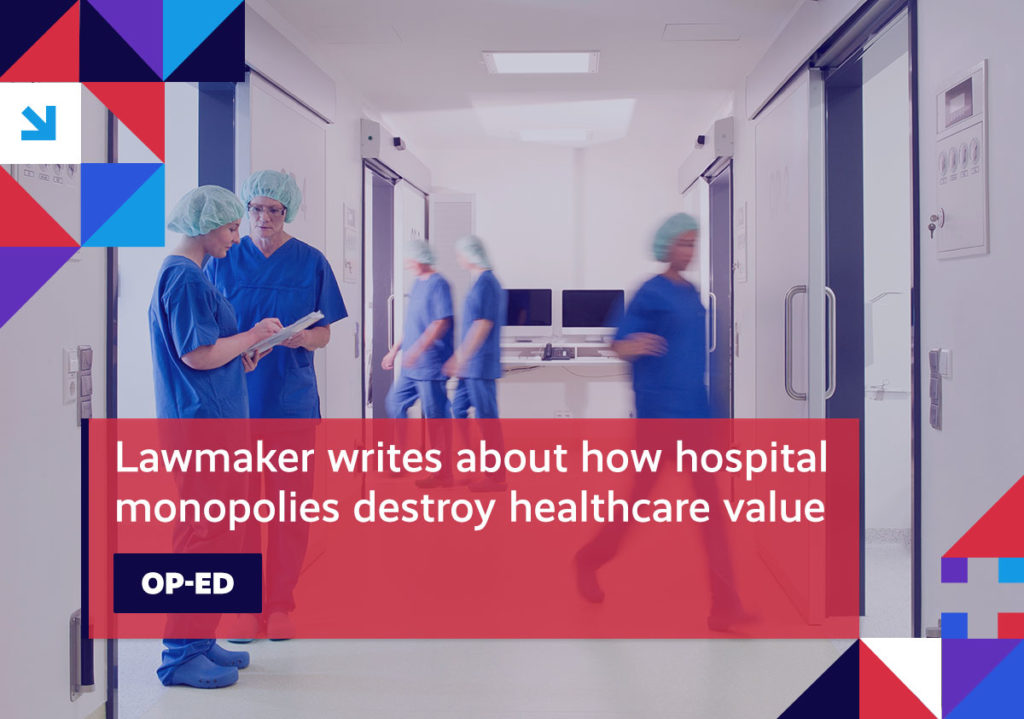A quick roundup of the issues driving the healthcare reform conversation.
Item of the Week

Week in Review
HOSPITALS & MEDICARE Hospital consolidation harms access and quality of care for Medicare beneficiaries.
Quick takeaway: In addition to establishing that consolidation in the hospital industry negatively impacts access and quality, research has shown that highly concentrated hospital markets can also have worse health outcomes, higher readmission rates, and increased per capita Medicare spending.
Further context: Utilizing Medicare claims data from 2021, a new analysis digs deeper into this issue, examining which areas of the country have the most consolidated Medicare hospital spending. What researchers found was that Medicare inpatient spending was highly concentrated in many parts of the US, with a large portion of that spending occurring in areas with fewer than three hospital systems.
What it means: A growing body of evidence points to healthcare prices being higher in consolidated hospital markets, particularly for commercial insurers. This puts pressure on Medicare to also raise rates to keep in line with commercial plans to prevent providers from no longer accepting Medicare patients.
The data also stands in direct contrast to the claims made by hospitals that they’re losing money on Medicare patients, which a separate report goes on to show is actually largely untrue, with some health systems even making millions.

MEDICARE ADVANTAGE The Medicare Advantage (MA) program continues to distinguish itself from traditional Fee-for-Service (FFS) Medicare.
Quick takeaway: With MA enrollment expected to soon eclipse 30 million beneficiaries, a slew of new datapoints tells the story of the program increasingly attracting eligible seniors, including:
- A growing percentage of beneficiaries switching from FFS to MA
- The majority of minority and low-income beneficiaries choosing MA
- MA outperforming FFS on certain diabetes outcomes
Further context: Given that 156 million Americans now receive health coverage through public programs (such as MA, Medicaid, or the Children’s Health Insurance Program, or CHIP), the role that these programs play in people’s lives has become as vital as it’s ever been.
What it means: Every year around this time the Centers for Medicare & Medicaid Services (CMS) proposes changes to the rates and policies for the MA program. And, every year around this time stakeholders urge CMS to protect the program that’s become such a critical part of so many Americans’ lives.
Keep an eye out for how you can help!

SURPRISE MEDICAL BILLS Half of all ground ambulance rides result in surprise medical bills.
Quick takeaway: According to a report released last month, ground ambulance companies routinely balance bill patients out-of-network charges, which occur when services are delivered outside that patient’s insurance network.
Further context: Even after their health plan pays a portion of the emergency transport charges, about half of all consumers are billed an additional amount – charges that add up to approximately $129 million annually.
What it means: Last year, the No Surprises Act (NSA) went into effect protecting consumers from the surprise medical bills that can often result during emergencies or when patients receive care from out-of-network providers or specialists at in-network hospitals.
The NSA’s protections apply to costly air ambulance services, but do not cover ground ambulances, which are far more common. But, an advisory committee, established by the NSA, is commencing work to address the issue of ground ambulances, which should result in additional protections for patients transported by these companies.
Providers have challenged the rules in court, specifically, the matter in which disputed charges are resolved. Despite their opposition, though, stakeholders point to the NSA as working as intended, having already prevented 9 million surprise medical bills through the first nine months of 2022.
Spotlight

| You can keep up with the latest by following the Health Action Network on Twitter and by liking us on Facebook. And, be sure to check us out on LinkedIn, too. As always, let us know if there’s something you’d like to see covered in a future newsletter. |
